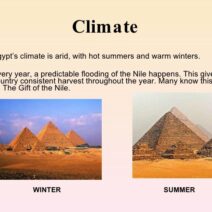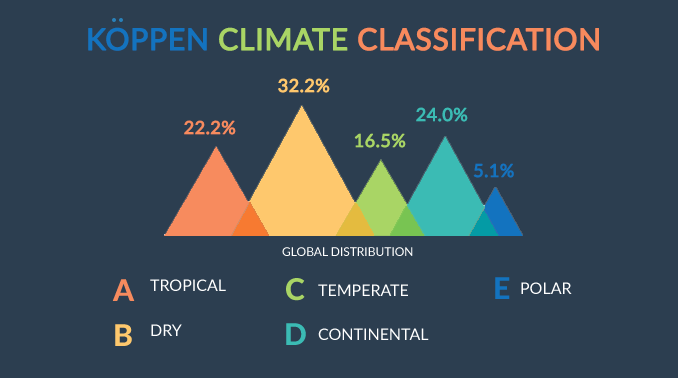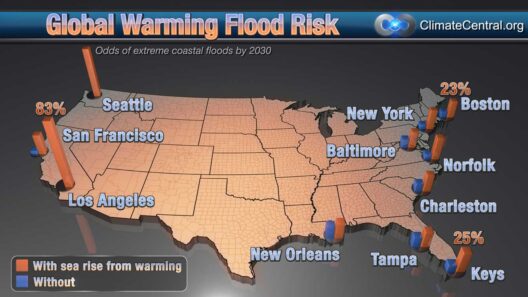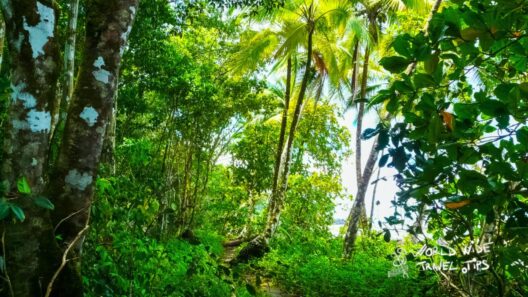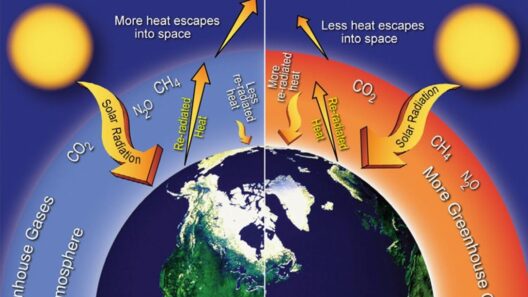The world, a planetary tapestry, unfurls in a multitude of climates, each thread woven with distinct characteristics, shaping the environment, culture, and lives of myriad organisms. The intricacies of weather systems lead to classifications that encapsulate our planet’s dramatic variety. The question arises: how many major climate types exist? The classification of climates provides not just an understanding, but an appreciation of the Earth’s diverse meteorological phenomena.
At the core of climate classification lies the Köppen climate classification system, devised by Russian-German climatologist Wladimir Köppen in the early 20th century. This system elegantly categorizes the earth’s climates based on observable temperature and precipitation patterns, ultimately painting a vivid picture of ecological and geographical diversity. It serves as a compass for navigating the complexities of climate types, creating reference points that enrich our understanding of environmental dynamics.
Within this classification system, five principal climate groups emerge, each akin to a unique realm within the vast kingdom of weather. These categorized climates are: tropical, dry, temperate, continental, and polar. Each group dances to the rhythm of its individual characteristics, influenced by geographical location, altitude, and proximity to bodies of water. To delve into these climates is to embark on a journey through the planet’s varied ecosystems.
The tropical climate, a vibrant Eden, embodies perpetual summer and insatiable humidity. Found predominantly near the equator, this climatic regime is defined by lush forests, fervent rainfalls, and biodiversity that dazzles the senses. The tropical rainforest, with its towering trees and symphony of wildlife, thrives in this environment, a testament to nature’s resilience and vitality. However, the allure of this climate is counterbalanced by the threats posed by deforestation and climate change, which jeopardize both local species and global biodiversity.
In stark contrast lies the dry climate, which stretches its arid fingers across vast expanses. This group encapsulates desert climates, characterized by minimal precipitation and extreme temperature fluctuations. The Sahara Desert, for instance, narrates tales of survival, as flora and fauna have adapted ingeniously to thrive under harsh conditions. Arid landscapes, though seemingly barren, harbor a subtle beauty, teeming with life that has learned to navigate the intricacies of scarcity. Here, resilience is not merely a trait, but a way of existence.
Transitioning from the dry to the temperate climate feels akin to wandering from a parched desert to a flourishing garden. Temperate climates showcase the enchanting interplay of seasons, where warm summers and crisp winters coexist in profound harmony. This climate, replete with deciduous forests, grasslands, and rich agricultural zones, nurtures human civilization. The Mediterranean, with its mild, wet winters and hot, dry summers, serves as a quintessential exemplar of temperate climates and heralds the onset of picturesque landscapes adorned with vineyards and olive groves. The human connection to this climate is deep-rooted, with cultures and nourishments borne from the land’s generous yields.
Venture further into the heart of the continent, and one uncovers the continental climate. This climate type, distinguished by its pronounced seasonal temperature variation, unfolds primarily over the interior of landmasses. Here, summers can blaze with heat, while winters succumb to chilling lows. The tale of the continental climate is best illustrated through the North American prairie, where sweeping grasslands stretch under a vast sky. Adaptability reins supreme in this realm, as both flora and fauna navigate the oscillating rhythms of warmth and cold.
Finally, emerge into the polar climate, a somber yet stunning expanse where frost and snow reign supreme. Characterized by frigid temperatures that linger throughout the year, this climate type beckons thoughts of desolation yet encompasses a silent beauty. The Arctic and Antarctic regions form the crux of the polar climate, serving as critical indicators of the planet’s health. Vulnerable to the vicissitudes of climate change, these icy realms hold ancient secrets within their glaciers. Their melting is not merely a local crisis but a harbinger of global implications, affecting weather patterns and sea levels far beyond their icy confines.
Understanding the myriad climate types is crucial, yet the narrative extends beyond classification. Climate influences human activity, agriculture, biodiversity, and even political dynamics. As the climate crisis looms larger on the horizon, awareness must burgeon regarding the significance of these classifications. Each climate type is not merely a label; it embodies ecosystems that sustain lives, cultures, and traditions intertwined with the natural world.
In conclusion, the expansive canvas of the Earth’s climates invites exploration and introspection. Each major climate type offers a unique appeal, a distinct narrative that contributes to the planet’s ecological balance. As guardians of this Earth, recognizing and respecting these climates becomes imperative. The tapestry of life, woven from diverse climatic threads, calls upon humanity to nurture and preserve its integrity, ensuring a sustainable future for generations to come. Embracing this knowledge helps foster a harmonious coexistence with the environment and a deeper appreciation for the planet we inhabit.

